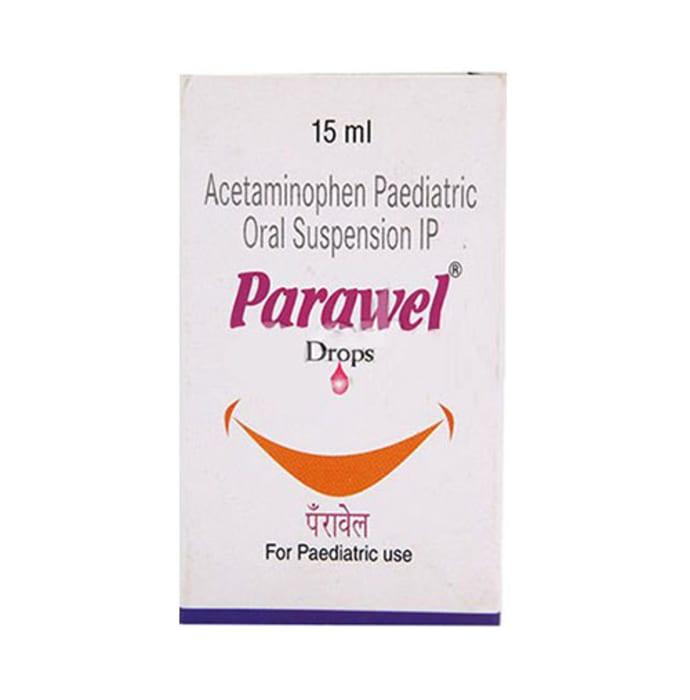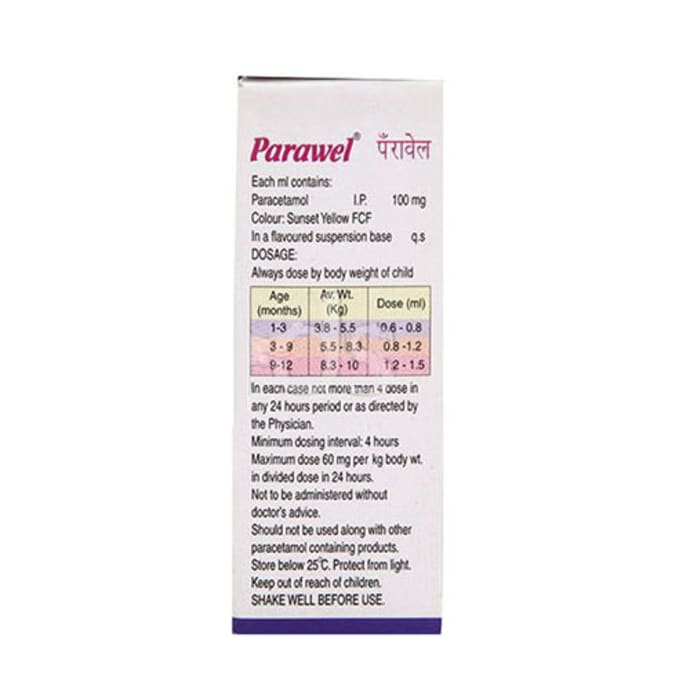

Manufacturer: Med Manor Organics Pvt Ltd
Salt Composition : Paracetamol(100mg/ml)
Packet of 15ml Oral Suspension
(Inclusive of all taxes)
Parawel Drop is given orally preferably at a fixed time every day. Though this medicine can be taken before or after food, it is best given after food as it can irritate the inner lining of an empty stomach. The dose and duration will depend upon your child’s age, body weight, and severity of the infection, so stick to the dose, time, and way prescribed by your child’s doctor. If your child vomits within 30 minutes of taking the medicine, let the child calm down and repeat the same dose. Redosing is not recommended if your child vomits more than 30 minutes after taking a dose.
Do not give your child Parawel Drop along with other medicines (many cold and flu medicines and other painkillers) that contain paracetamol, as this may result in overdosing and cause dangerous side effects such as hepatotoxicity (liver damage). Always check the ingredients of any other medicines before giving them to your child in combination with this medicine.
Generally, this medicine is well-tolerated by the children. However, temporary side effects such as indigestion, nausea, and vomiting may occur in some children. Consult your doctor in case these episodes become bothersome for your child.
This medicine is often considered safe and effective but may not be suitable for everybody. Inform your doctor if your child is undergoing treatment for any blood-related disorder, is allergic to any medicinal compound, or has any birth defects, liver impairment, or kidney dysfunction. This will help your child’s doctor evaluate the dose and suitability of this medicine in a better way.